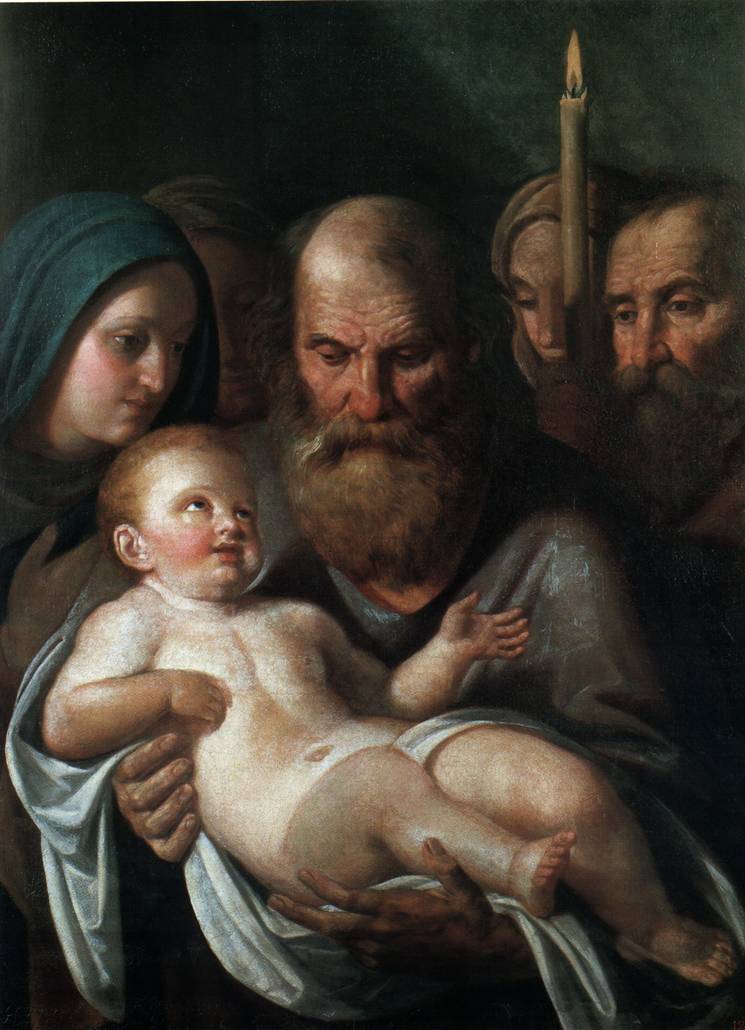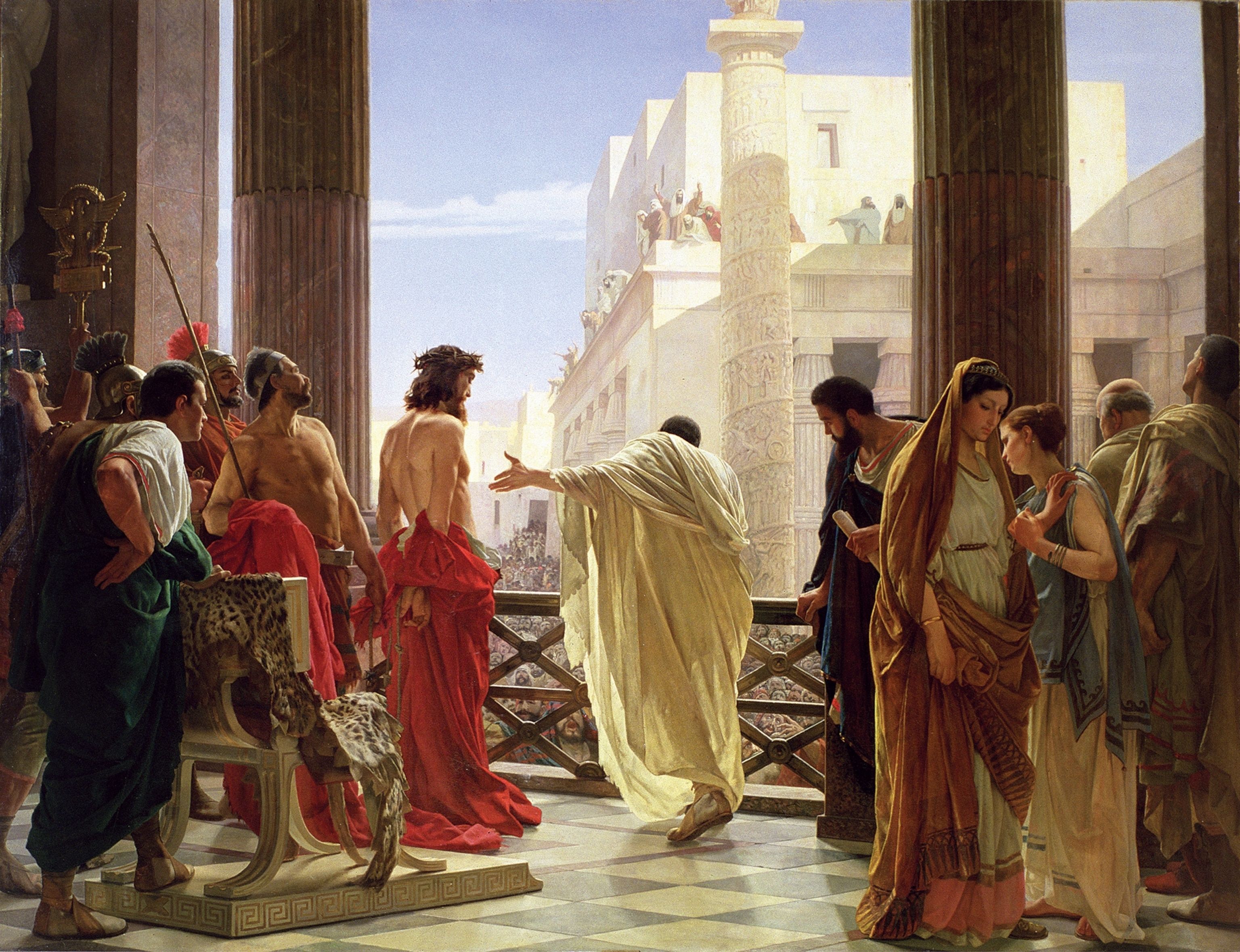
“Simeon and Anna Recognize the Lord in Jesus” – at the Presentation of Our Lord…
* * * *
Tuesday, February 2, was the Feast for the Presentation of Jesus at the Temple:
Counting forward from December 25 as Day One, we find that Day Forty is February 2. A Jewish woman is in semi-seclusion for 40 days after giving birth to a son, and accordingly it is on February 2 that we celebrate the coming of Mary and Joseph with the infant Jesus to the Temple at Jerusalem…
 See The Presentation, from the Satucket web site. (The one with all the DORs.) See also On The Presentation of Our Lord, a post I did last year at this time. And as noted last year, this Feast celebrates the episode in Jesus’ life described in Luke 2:22-40.
See The Presentation, from the Satucket web site. (The one with all the DORs.) See also On The Presentation of Our Lord, a post I did last year at this time. And as noted last year, this Feast celebrates the episode in Jesus’ life described in Luke 2:22-40.
Luke said that “Mary and Joseph took the Infant Jesus to the Temple in Jerusalem … to complete Mary’s ritual purification after childbirth.” They did so “in obedience to the Torah (Leviticus 12, Exodus 13:12–15.”
Luke explicitly says that Joseph and Mary take the option provided for poor people (those who could not afford a lamb) (Leviticus 12:8), sacrificing “a pair of turtledoves, or two young pigeons.” Leviticus 12:1–4 indicates that this event should take place forty days after birth for a male child, hence the Presentation is celebrated forty days after Christmas.
That’s where “Simeon and Anna” come in. Briefly, they recognize the Lord in Jesus.
That is, Simeon had previously been “visited by the Holy Spirit” – as imagined in the image below right – “and told that he would not die until he had seen the Lord’s Christ.” So – according to Luke 2:27 – Simeon “came in the Spirit into the temple,” on what happened to be the exact day that Jesus’ parents brought Him in. (For “ritual purification.”)
 (See also 2d Peter 1:21 for an example of prophets being moved in the spirit: “no prophecy ever originated through a human decision. Instead, men spoke from God as they were carried along by the Holy Spirit.”)
(See also 2d Peter 1:21 for an example of prophets being moved in the spirit: “no prophecy ever originated through a human decision. Instead, men spoke from God as they were carried along by the Holy Spirit.”)
So anyway, on seeing the baby Jesus, Simeon “uttered the prayer that would become known as the Nunc Dimittis,” Luke 2:29-32 (NIV):
“Sovereign Lord, as you have promised, you may now dismiss your servant in peace. For my eyes have seen your salvation, which you have prepared in the sight of all nations: a light for revelation to the Gentiles, and the glory of your people Israel.”
Simeon then prophesied to Mary, as told in Luke 2:34-35. And finally there was the “elderly prophetess Anna,” who was also in the Temple at the time.
She too offered prayers and praise to God – for Jesus – and spoke to everyone there of His importance to the redemption of His People. (In Luke 2:36-38.)

Put simply, Mardi Gras is one final blowout (celebration) on the last day before by Lent. (A “solemn religious observance” involving some 40 days of “prayer, penance,repentance of sins, almsgiving, atonement and self-denial.”) And both of those Feast Days are right around the corner.
Shrove Tuesday in 2016 comes a week after the Presentation, on February 9. The next day, February 10, is Ash Wednesday, which marks the beginning of Lent. And Lent serves as a reminder of the last time that Jesus would be “Presented to the People.”
The painting below shows us that last time Jesus would be presented. This time it was by Pontius Pilate, “presenting the mocked and scourged Jesus to the people.”
* * * *

* * * *
The upper image is courtesy of the “Simeon” link in the Wikipedia article on the Presentation. That caption: “Simeon the Godreceiver by Alexei Egorov. 1830–40s.” The caption I used for the upper image is actually the one from Simeon and Anna Recognize the Lord in Jesus. That’s another interpretation of the event, by Rembrandt (van Rijn). (Who is far better known that Egorov.) You can see Rembrandt’s interpretation at “Wikigallery,” or at “Rembrandtonline.”
And I’m assuming “Anna” is one of the women in Egorov’s background.
* * * *
The Nunc Dimittis is also known as the Canticle Of Simeon, “which prophesied the redemption of the world by Jesus.” See Prayers – Catholic Online for another good image of the event.
The lower image is courtesy of Pontius Pilate – Wikipedia. The caption: “Ecce Homo (‘Behold the Man’), Antonio Ciseri‘s depiction of Pilate presenting a scourged Jesus to the people of Jerusalem.”
See also Rembrandt van Rijn: Christ Presented to the People – for a drypoint image – and Jesus Christ Presented to the People by Rembrandt, which provided the “mocked and scourged Jesus” text.